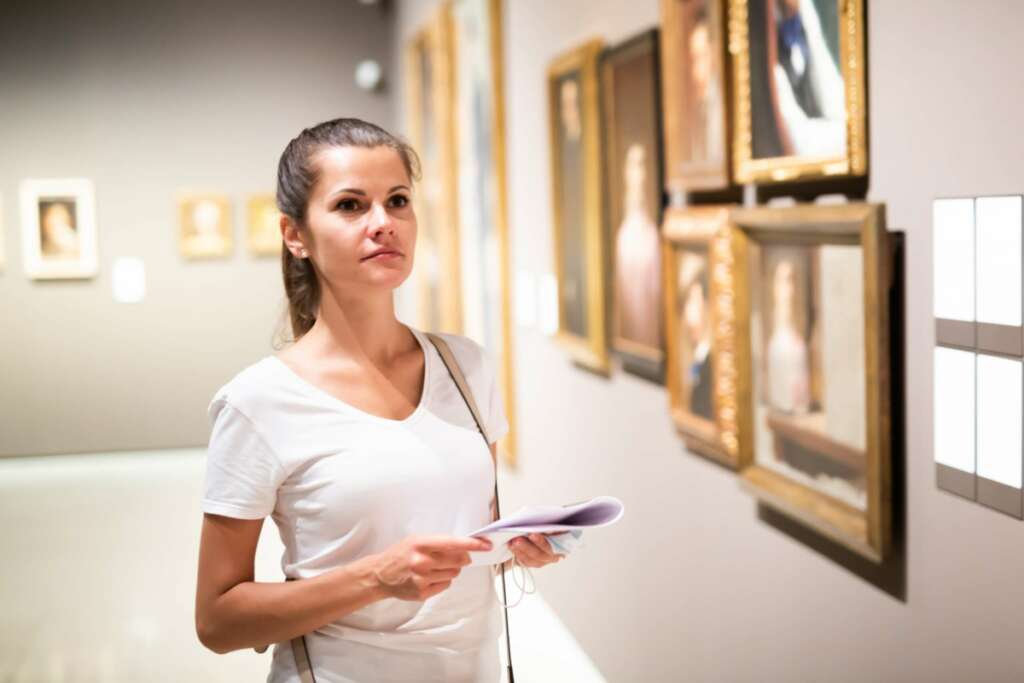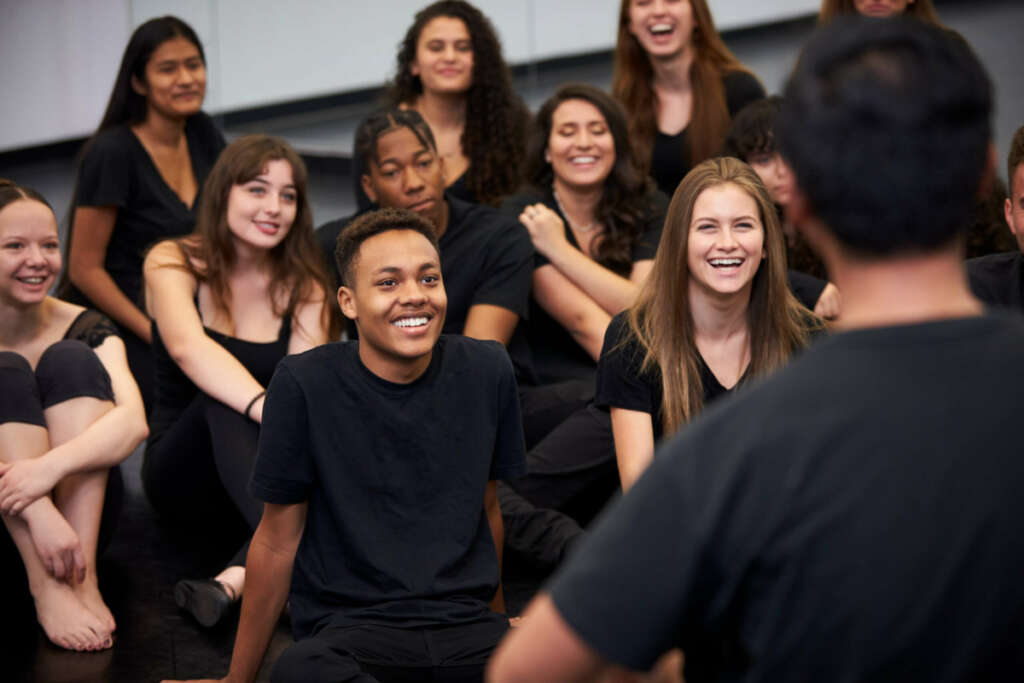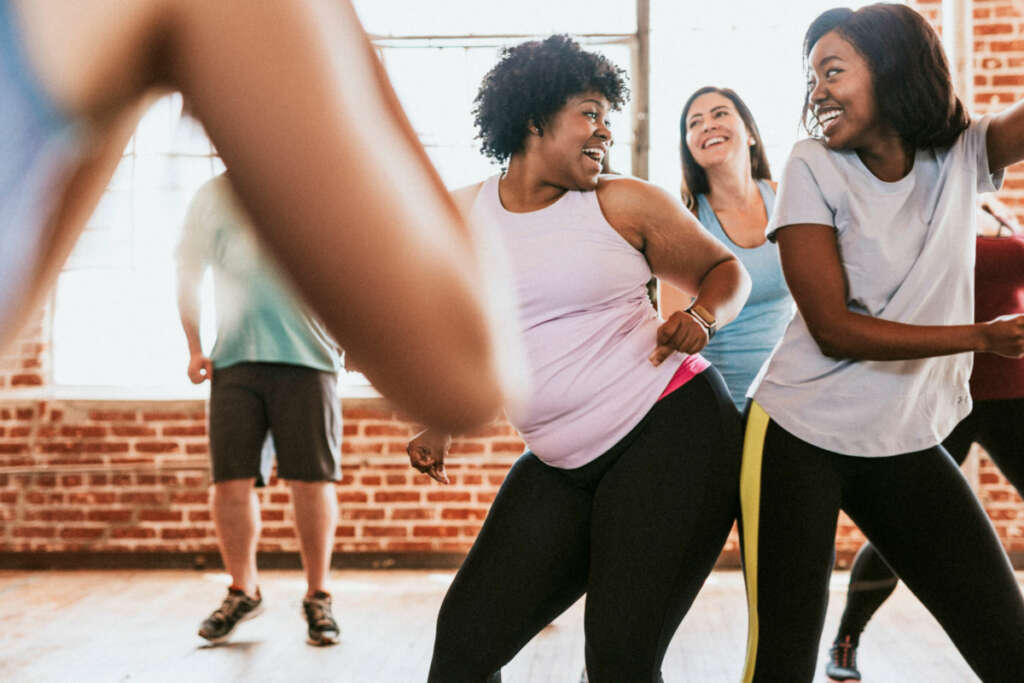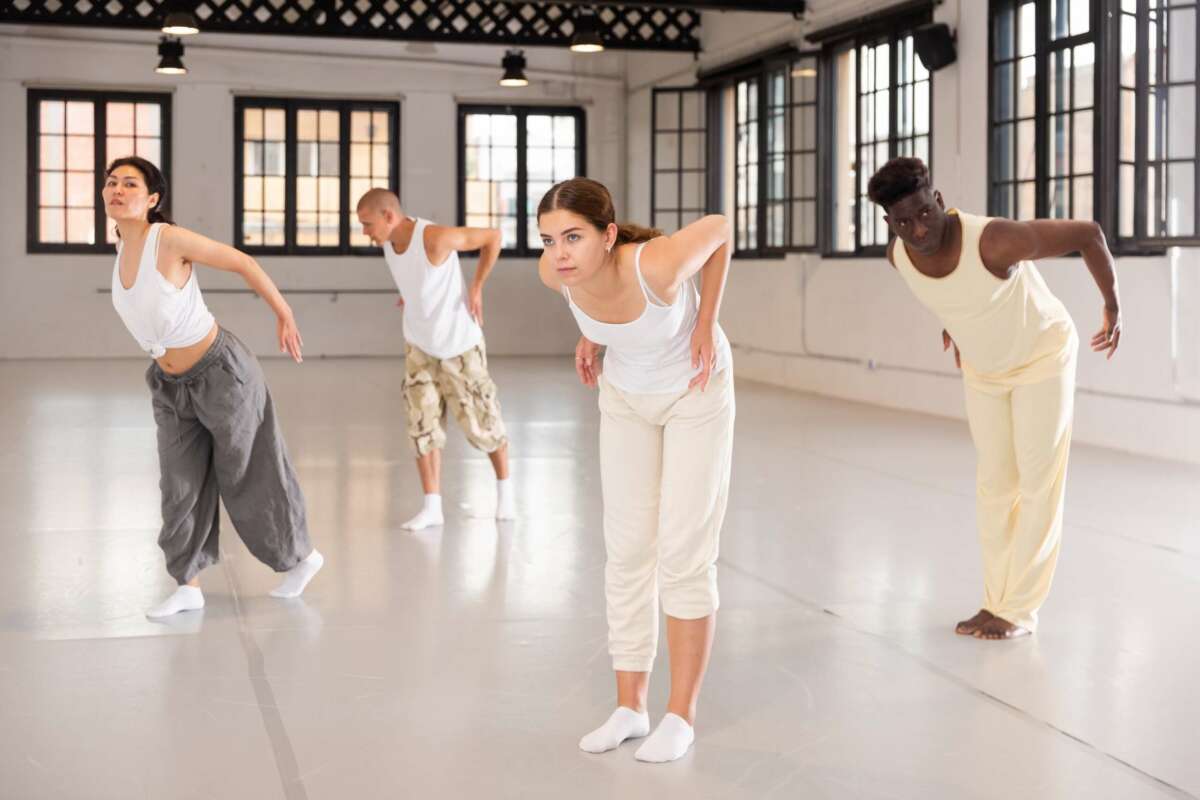Modern times and cool new innovations always seem to be about speed. Faster access to information, faster travel to destinations, and faster transmission of both good and bad (and fake) news. But what if all that speed has taken something precious from us? What if slow is actually the luxury that we all need more of? That’s the belief of the creator of the Slow Show, Dimitri Chamblas, who pioneered the slow dance movement, with performances that celebrate deliberate, considered and infinitesimal movement. We pulled up a chair to hear his vision and to consider the benefits of experiencing and savoring art, dance, food and culture . . . slowly.
contemplative culture began with the slow art movement
Art aficionados have heard of (and perhaps participated in) the “Slow Art” movement, which involves stopping to look at work on the walls of a museum or gallery for an extended period of time before moving on to the next work. Studies have shown that the average visitor to an art museum looks at a specific piece for less than 30 seconds — 17 seconds, to be exact.

The slow art, food and dance movements teach the importance of experiencing culture in a contemplative manner.
The Slow Art movement seeks to turn this on its head, urging museum visitors to spend as much as 10 minutes with just one work. After such slow viewing, the artwork has taken on layers of meaning and perhaps even different forms. It’s a level of intensity and engagement that goes much deeper than a random stroll past hundreds of works in a single museum visit. As the founder of Slow Art Day put it in 2008, “slowing down helps us see art in a new way that energizes rather than demoralizes.”
it continued with the slow food movement
There’s also the Slow Food movement, the goal of which is to foster more people taking an interest in where their food comes from, who grows and harvests it, and what difficulties they encounter while doing so. It’s also a movement to rediscover, catalog, describe and publicize forgotten foods. Dinners and tastings are a chance for strangers to come together to share the everyday joys of food. And to reflect on the cultures that created and relied on various foodways throughout history.
now, a slow dance movement
choreographer Dimitri Chamblas and the slow show
When he was a child, Dimitri Chamblas asked his parents to define contemporary dance. “‘Contemporary dance has no definition,’” he quotes them saying. “’Contemporary dance is what you want contemporary dance to be.’”
And with his work as a choreographer, Chamblas has taken that idea – of contemporary dance as a wide-open space – and run away with it, creating projects that expand beyond convention.
Chamblas speaks of dance like a buried treasure – one that lurks inside the human body, waiting for someone to bring it to the surface. Dance is not something that people do, but something that already exists within them; something that’s waiting to be expressed. And those dances may help to illuminate something significant about who they are.
“The reason why I chose choreography is because I feel like my work is also revealing people,” Chamblas says. “Each and every single movement is telling something about the person, in a very true and profound way.”
Perhaps this perspective on dance – one that centers as much around the interior lives of the dancers as it does around any finished product or performance – will help to shed light on Chamblas’s marvelous creation, Slow Show.
what is the slow show?
Even if you’ve seen hundreds of dance performances, there’s a chance you’ve never seen one like Slow Show. And there’s an even greater chance that you’ve never heard of one that is put together in the same way.
a series of performances around the world
For one thing, Slow Show is not performed by a single dance company. “It’s a project that is traveling the world,” Chamblas says. “It’s really an idea that goes from one city to another.” Those cities have included Minneapolis, Minnesota; Arles, France; and Ouagadougou, Burkina Faso. And each time the project arrives in a new location, its dancers change.

Dimitri Chamblas and the Slow Show reveal the power of the slow dance movement in performance.
a new set of performers at each new location
For every new rendition of Slow Show, Chamblas works to assemble fifty-five new participants. These participants are locals to the area, and they may or may not have ever danced before. For Chamblas, the process of finding these fifty-five people is a major part of the project.
“How do you open your arms and your heart to everyone?” he asks. He welcomes anyone who wants to join the project – experienced dancers, yes, but also amateurs. Once the dancers are assembled, they have three days to learn the twenty-minute piece, which is composed of small, subtle, movements.
“It’s really a workshop, and a way for people to meet through a physical practice,” Chamblas says. “All of those physical experiences with all of those people sharing the same space really build a very strong – but also a very ephemeral – community.”

Dimitri Chamblas and the Slow Show reveal the power of the slow dance movement in performance.
live audience instructions: just slow down
And after those three days, this ephemeral new community expands – to include the members of a live audience. In the same way that the dancers are tasked with learning the movements of Slow Show, the audience has their own assignment: to slow down.
“It’s quite funny,” Chamblas says, when speaking of the audience. “Those fifty-five performers are dancing so, so slow, that if you are impatient, you wouldn’t even see that they’re moving. To appreciate what’s happening on the stage, to connect with the static-like movements, each member of the audience must find a sense of internal calm. If they can do that – if they can slow down – then they will be able to enter the special world of slow show.
“After ten, fifteen minutes of the show, everybody together – audience and performers – are creating one single crowd,” Chamblas says. This is particularly meaningful, since the audience is often composed of the participants’ own friends and relatives – and like the participants, they may never have experienced a dance performance before.
van cleef and arpels and dance reflections
Slow Show was performed at Los Angeles’ Museum of Contemporary Art on October 25th, as part of a series in partnership with Dance Reflections by Van Cleef and Arpels. Slow Show is one of three projects that Dance Reflections will present at the museum, along with Benjamin Millepied’s Be Here Now, and Gisèle Vienne’s Crowd.
dance, culture and fine jewelry
“Dance Reflections by Van Cleef and Arpels is the continuation of a very long and strong relationship between the Maison of fine jewelry and the world of dance,” says director Serge Laurent, the director of Van Cleef and Arpels’ Dance and Culture Program. Two years ago, the President of the Maison, Nicholas Bos, launched the program as a way of strengthening their commitment to the artform – its past, its present, and its future.
First and foremost, Dance Reflections functions as a curatorial and sponsorship program, devoted to the creation, transmission, and education of dance.
“We want to support confirmed and emerging artists who innovate in their approach to creation,” says Laurent. They also hope to help these artists reach the widest possible audience for their work – a mission that dovetails nicely with Chamblas’s. After all, Slow Show is all about expanding the reach of dance – expanding it until every person realizes there is dance buried somewhere inside of them, too.
supporting choreographic heritage
Laurent is also concerned with something he calls “choreographic heritage” – in other words, ensuring that the legacy and history of dance are preserved.
“I started my career in museums where the issue of [conservation] is essential,” Laurent says. “When I started to take an interest in dance, I realized that this art of the moment requires that we take an interest in the durability of the works and this requires the constitution of a repertoire. This is the marvelous job that classical ballet companies do by regularly presenting the great classics. It is also necessary to do this important work for modern and contemporary works. The history of contemporary dance is recent but there is already the concern to preserve the works.”
expanding the reach of slow show
And how better to preserve a work than inside the body of someone who has performed it? Chamblas has brought his dance projects across continents, as well as to prisons, universities, and refugee camps. And each time Slow Show, or any other piece of dance, reaches a new set of human beings, the future promise of contemporary dance is reaffirmed.
dimitri chamblas, the slow show, and a joyful look at the future of dance
Dance is not like writing, or visual art; it can’t be bound in a book or framed on a wall. But it can be captured in muscle memory – in the very bones of those who have put it on the stage. The more people who are out there dancing, the more confident we can feel about the future of the art form. One slow move at a time.









